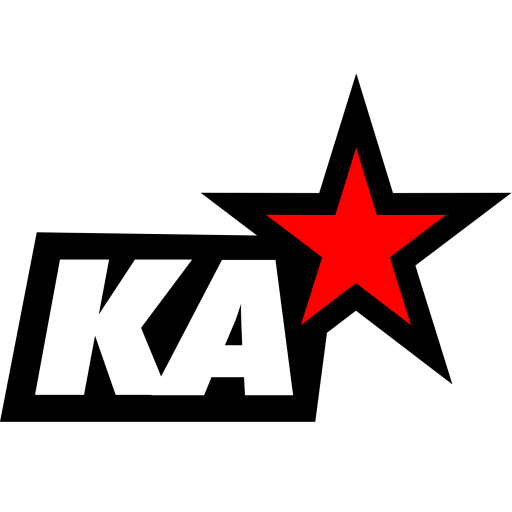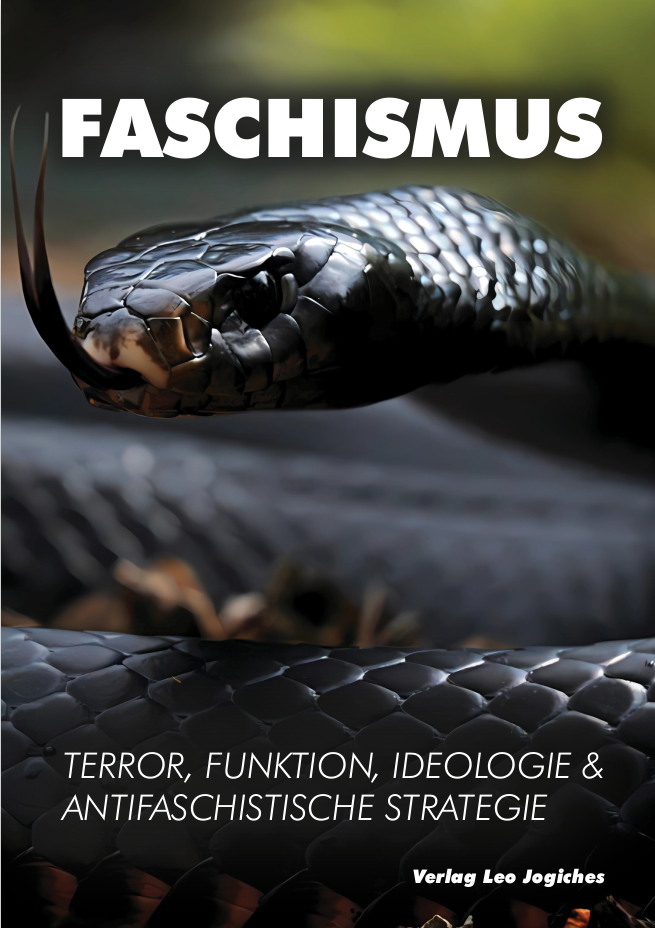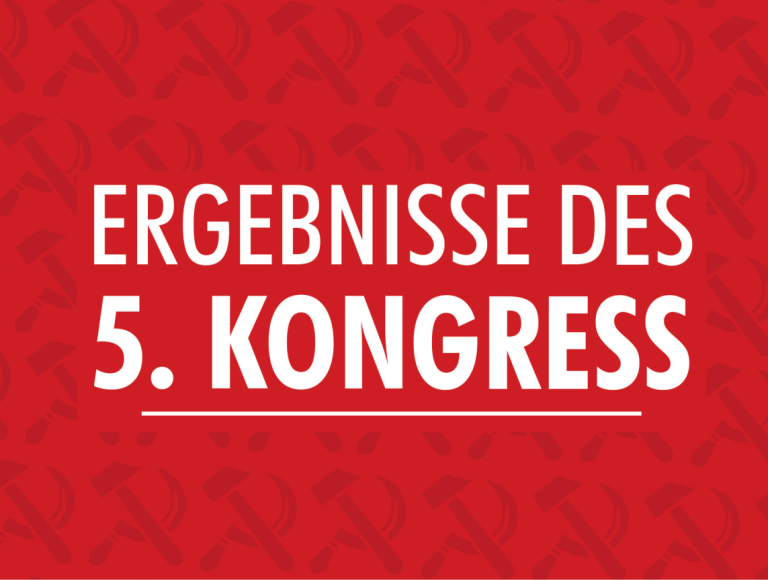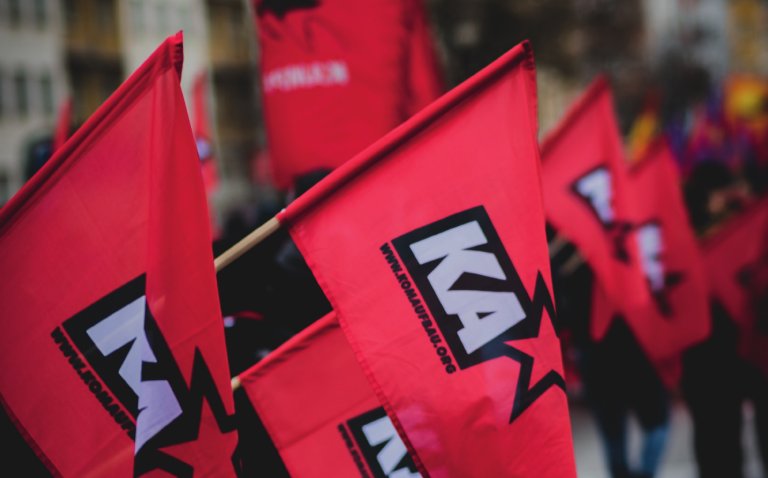We do not only fight for the reconstruction of a Communist Party in Germany, as the working class’ necessary tool for its liberation, but also for a revolutionary and militant workers’ movement, inseparable from its party. Only the interplay of a Communist Party and an organized workers’ movement can open the path to the revolutionary overcoming of the capitalist exploitation through the socialist revolution.
Though it may be a long and difficult path, we must take its first steps today and contribute to the development of such a movement. This requires us to overcome the separation of political and economical struggle, expose the role of the yellow unions and create the necessary organizational forms for this movement.
Overcoming the Separation of political and economical Struggle!
Already more than 150 years ago the harmful and undialectical seperation of political and economical struggle was established in Germany. Until the present day this appears as the natural ‘division of labor’ between party and union to many progressivelyminded people.
Until the present day this historical separation has developed and intensified. The former workers’ party SPD (Social Democratic Party of Germany) turned into one of German Imperialism’s reliable pillars as the DGB-unions and their ADGB-predecessors turned into co-mangers with the help of the sophisticated institutionalized system of “Sozialpartnerschaft” (social partnership).
The historical separation of economical and political struggle also facilitated drastic cuts to the right to strike in Germany. Today, not only political strikes are forbidden in Germany but strikes are also limited to aims regarding the wage agreement and times without the peace obligation set in German law.
For us communists, the strike is not a legal issue though. We have to take back this central method of class struggle and put it into practice. Naturally this includes any form of political strike up to the general strike.
The yellow Unions’ Function
In 1920 the SPD suffocated the betrayed revolution and the revolutionary council movement in Germany with the counter-revolutionary Works-Council-Law. In 1952 the new Works Constitution Act obliged the Works Council to cooperate with the capitalist in a “trustful manner” and to respect the industrial peace. Since that time social democrats use the institutionalized works council as a way to pacify class conflicts. Objectively, they are hindering the forthcoming of self-organized workers’ struggle and constantly reproduce legalistic and bureaucratic tendencies in class struggle. Strategically, the yellow DGB-union’s part to play is the integration and prevention of class struggle, not its promotion.
Today’s German unions do not slightly resemble the militant workers’ organizations we require to lead the class war successfully and ultimately for the socialist revolution. Their self-conception as the capitalists’ “social partner” proves that.
Thus, generally our work must aim to promote the independent organization of the working class. Only this way we will be able to realize independent actions of class war without or even against the yellow unions.
Broad parts of the Political Resistance Movement and even some of the revolutionary movement still don’t have a clear understanding of the yellow union’s character. This inevitably leads to politically tailing up to political integration into the unions. Both has to be overcome in order to develop a revolutionary militant worker’s movement.
Creating appropriate Forms of Organization
The ritualized repetition of creeds like “There is no alternative to the DGB-unions” hinders the development of a militant workers’ movement and the organizational forms necessary for its development.
Instead of a concrete analysis of the DGB-unions, their structure, their ideological line, their behavior and their general character, many organizations cling to this social democratic relic in the most dogmatic manner. Yet, the apparent absence of alternatives reproduces itself precisely because of the wide-spread rejection of building our own militant class organizations.
In the last 30 years the DGB-unions lost more than half of their members. Not six million workers remain even as passive DGB members. Only two million of them being women — a sharply declining trend. An industrial branch, where they do more than organizing some inconsequential warning strikes, is hard to be found. In many wage disputes — like recently in the economical and corona crisis — the unions entirely renounced to strike.
The building of class struggle organizations and later revolutionary unions, which truly are “Schools of Socialism” and help to develop the workers’ class consciousness is a strategical task we as communists have to tackle. On a tactical level at first this means to create networks and joint organizational forms for militant labor activists and create local company cells and groups, wherever we work and live. Our work inside companies has to be developed in a long-term and strategical way. Whether we also join the existing unions or directly choose independent forms of organization especially depends on the level of distrust the workers already developed regarding the unions and the union’s way of operation in each specific company.
What remains certain though is that the construction of a new militant and revolutionary workers’ movement necessitates new union-like structures, not linked to the ruling class, but fighting it and the whole capitalist system on the path to socialist revolution. The unionist work must become a school of class struggle once again!
Therefore, we reject any politics that make social, economical or political struggles into an absolute and regards them as an end in itself. As Lenin said, we also fight for the “tea water”, but we don’t do this as “militant unionists” or “defenders of the bourgeois democracy” but on a revolutionary basis as steps towards the Dictatorship of the Proletariat.
Let’s fight together for the reconstruction of a revolutionary and militant workers’ movement in Germany!
Let’s create a unified revolutionary Movement
The workers’ movement is not only weak on the organizational level, but also faces numerous attacks in the ideological arena, which impede the building of a unified revolutionary workers’ movement. One of the heaviest attacks in this regard comes with the theories of Postmodernism. The negative effects of the idealist theories of Postmodernism don’t only show on the ideological level, but also have a direct, destructive impact on political practice.
Uncountable alliances and political actions of the Political Resistance Movement have split over questions of “identity” and “privileges”. Oftentimes more energy goes into the discussion about the organizer’s or speaker’s “identity” and whether they shall be allowed to participate or not, than into the common political goal and the ways to reach it.
Instead of discussing individual “identities” and “privileges” and loosing sight of the common goal doing so, we have to organize our class siblings on the basis of their every-day problems and interests. Different organizational levels and models can help us here to meet different needs, problems and levels of consciousness.
Still, our overarching goal must stay the joint struggle against the capitalist system and to bring together our class in this very struggle. Organization on the basis of different problems in different organizational forms is only a necessary tool in order to include as many class siblings as possible into the organized struggle against the capitalist system and the specific oppression and exploitation mechanisms that come with it.
Not only ideologically, but also organizationally we have to unify the different struggles against the diverse effects emerging from the rule of capital. For all struggles have something in common: Ultimately their goals can only be achieved through the revolutionary overthrowing of the capitalist system, socialist construction and the transition to communism.
If we want to organize the socialist revolution, we have to overcome the division and segmentation of our class step by step and build a strong and united revolutionary workers’ movement.




